Art History 2 Midterm
1/74
Earn XP
Description and Tags
Ty Ashley for adding the art identification bit!!! KEEP IN MIND: You don't have to know the exact spelling and stuff for the art identification or anything, it's multiple choice
Name | Mastery | Learn | Test | Matching | Spaced |
|---|
No study sessions yet.
75 Terms
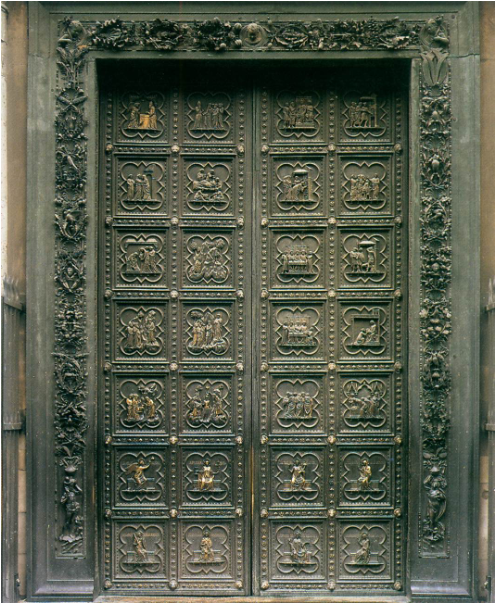
Which piece is this? It was apart of a competition that this artist won. It uses Quatrefoils. It also tells a story, similarly to other pieces around it’s time.
Andrea Pisano “South doors” 13th and 14th c. Italian Art
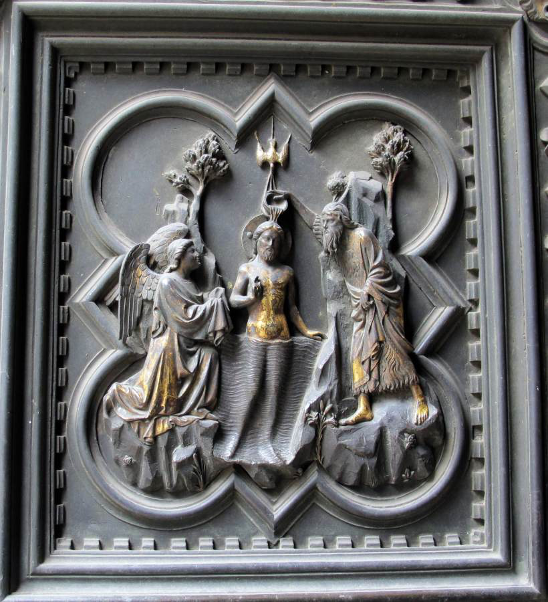
Which piece is this? It is one of the panels on the “South Doors”
Andrea Pisano “The Baptism of Christ” 13th and 14th c. Italian Art
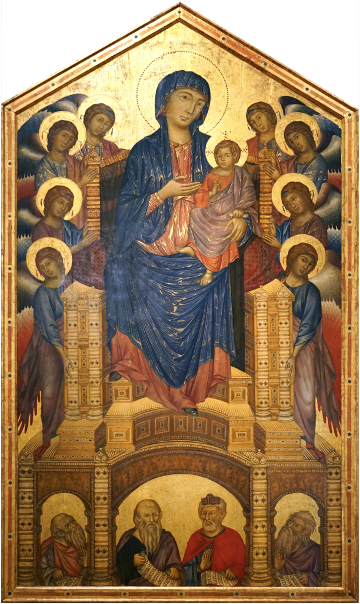
Which piece is this? It has Byzantine influence, and utilizes iconic imagery.
Cimabue “Madonna Enthroned" 13th c. Italian Art
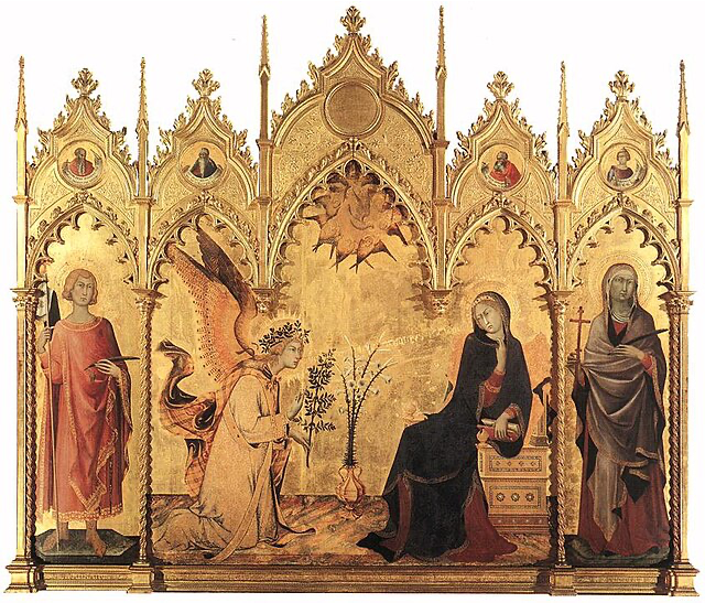
Which piece is this? The top architectural bit has gothic influence, the gold leaf/iconic imagery is Byzantine influence, and the rich colors are Flemish influence.
Simone Martini “Annunciation" 13 and 14th c. Italian Art
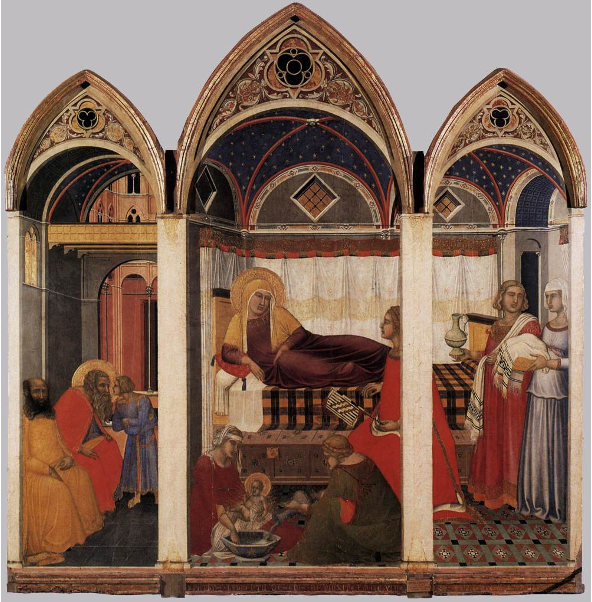
Which piece is this? It is a triptych, and inspiration from Gothic architecture and Byzantine gold leaf
Pietro Lorenzetti “Birth of the Virgin” 13th and 14th c. Italian Art
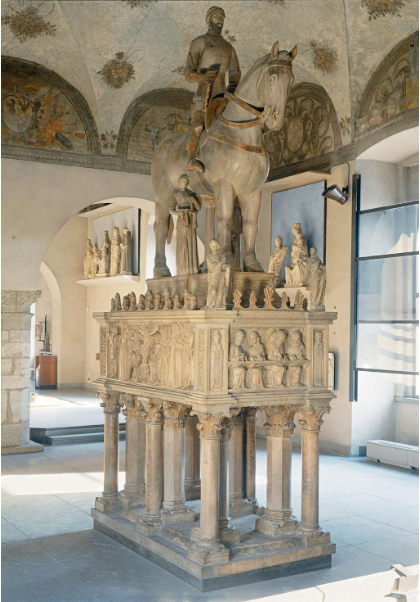
Which piece is this? It is influenced by Roman Classical art because of its equestrian statue, architectural elements (columns, arches), and it’s anatomically and architecturally good
“Tomb of Bernabò Visconti” 13th and 14th c. Italian Art
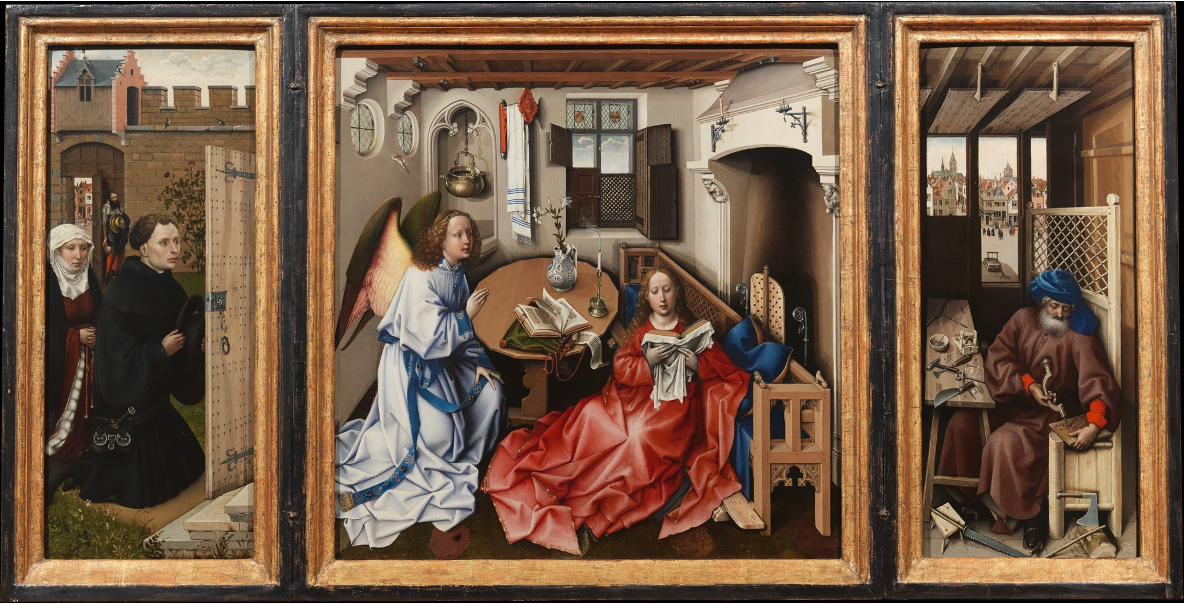
Which piece is this? It is a triptych with the commissioners on the left side, and the middle is the Annunciation. There is a lot of symbolism, such as a cross in window is depicting Jesus. Mary and Gabriel are put in a contemporary setting in the 15th century in order to have people relate to these religious figures. Architecture is used to make space.
Robert Campin and workshop. “Mérode Triptych” 15th c. Northern European Art

Which piece is this? It is a polyptych featuring Grisaille, atmospheric perspective, and naturalism
Hubert and Jan van Eyck “Ghent Altarpiece” 15th c. Northern European Art
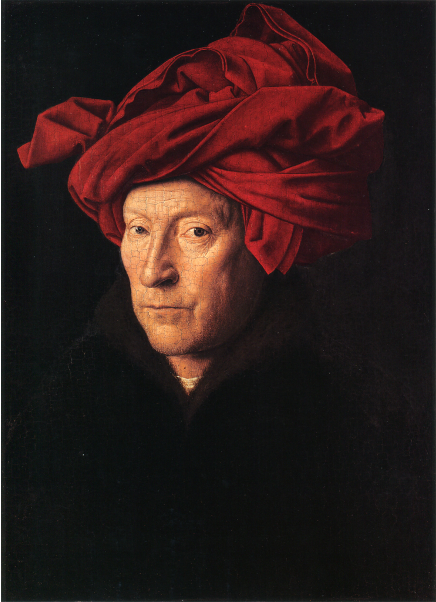
Which piece is this? It is secular, and may be a self portrait. There is a concern with naturalism, such as the mimic of natural features like wrinkles, and no proof of idealization
Jan van Eyck “Man in a Red Turban” 15th c. Northern European Art

Which piece is this? This iconic piece has lots of symbolism, and marked the beginning of the popularization of oil painting. Oil paints made works look crisper and more realistic
Jan van Eyck “The Arnofili Portrait” 15th c. Northern European Art
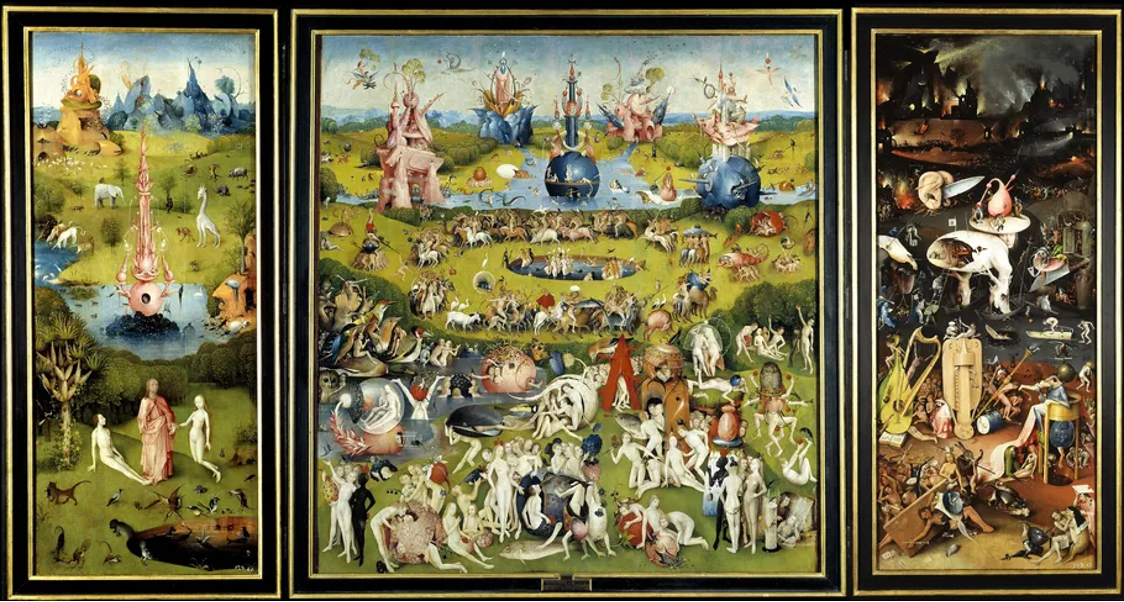
Which piece is this? This surreal triptych features depictions of Heaven, Hell, and the Earth.
Hieronymous Bosch “The Garden of Earthly Delights” 15th c. Northern European Art
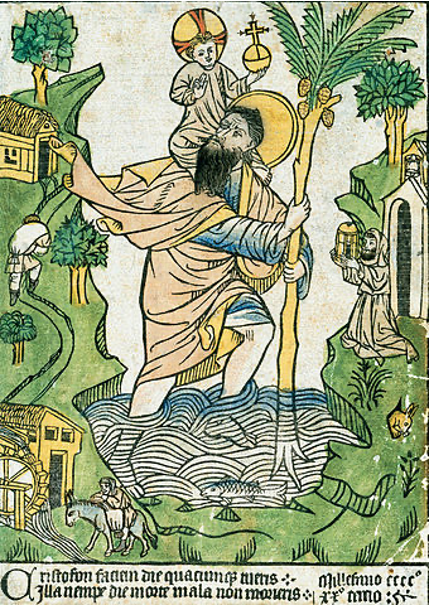
What piece is this? Woodcutting came about with the printing press. This made art more affordable for the middle class
Buxheim St. Christopher “Hand Colored Woodcut” 15th c. Northern European Art
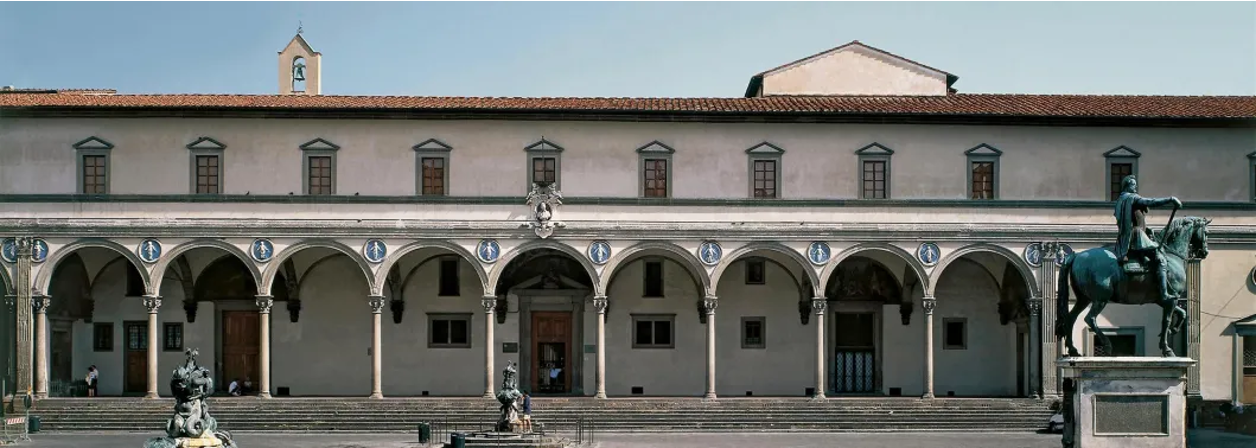
Which piece is this? There was a ton of focus on proportions. Each bay is exactly square, all heights are proportionally relevant with each other, all windows equal length.
Filippno Brunelleschi “Hospital of Innocents” Early Renaissance 15th c. Italy
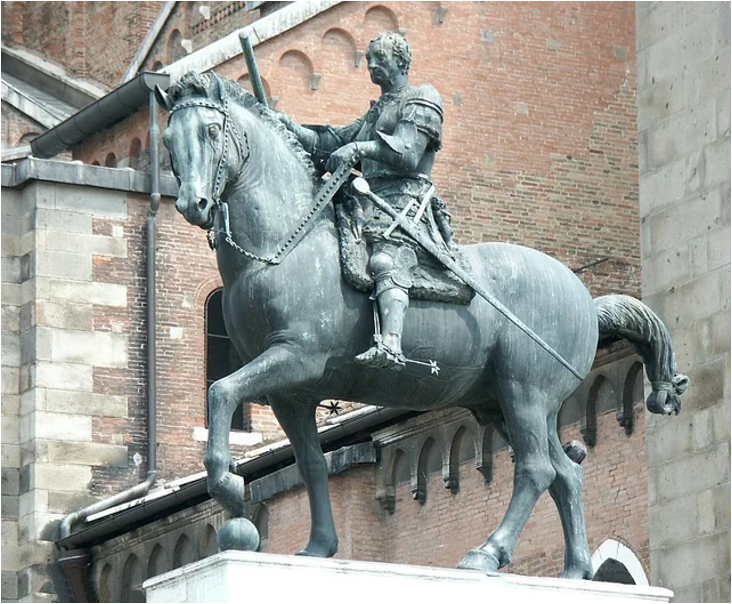
Which piece is this? It showed an interest in anatomy, movement, and a focus on making humans and animals naturalistic
Donatello “Equestrian Monument of Gattamelta” Early Renaissance 15th c. Italy
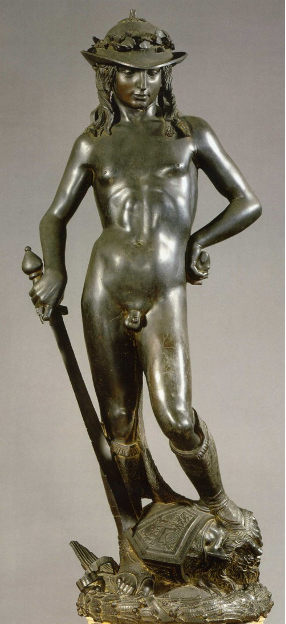
Which piece is this? It is in a contrapposto pose, and has accurate proportions (it looks back to the classical era). However, the figure seems really young.
Dontatello “David” Early Renaissance 15th c. Italy
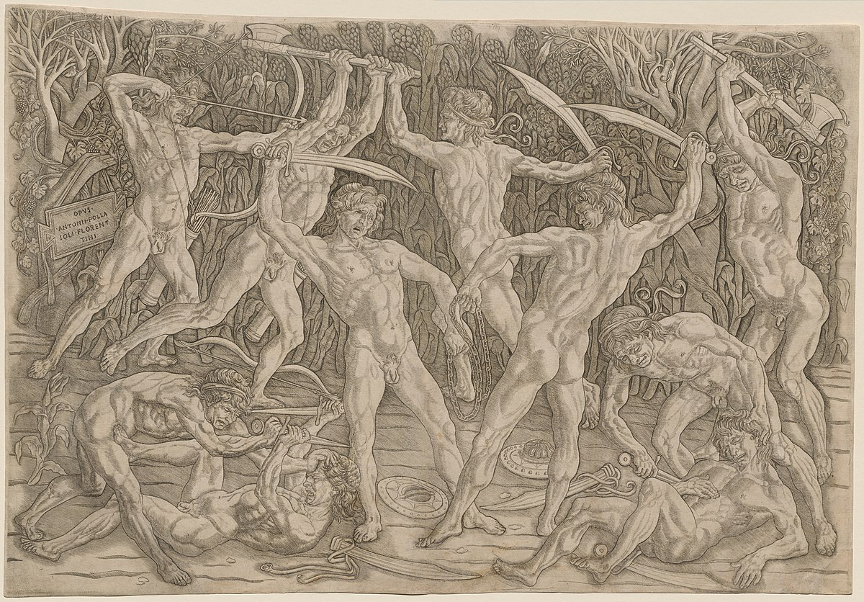
Which piece is this? There was a focus on depicting the human body in motion, along with accurately depicting the human body
Antonia del Pollaiuolo “Battle of the Nudes” Early Renaissance 15th c. Italy
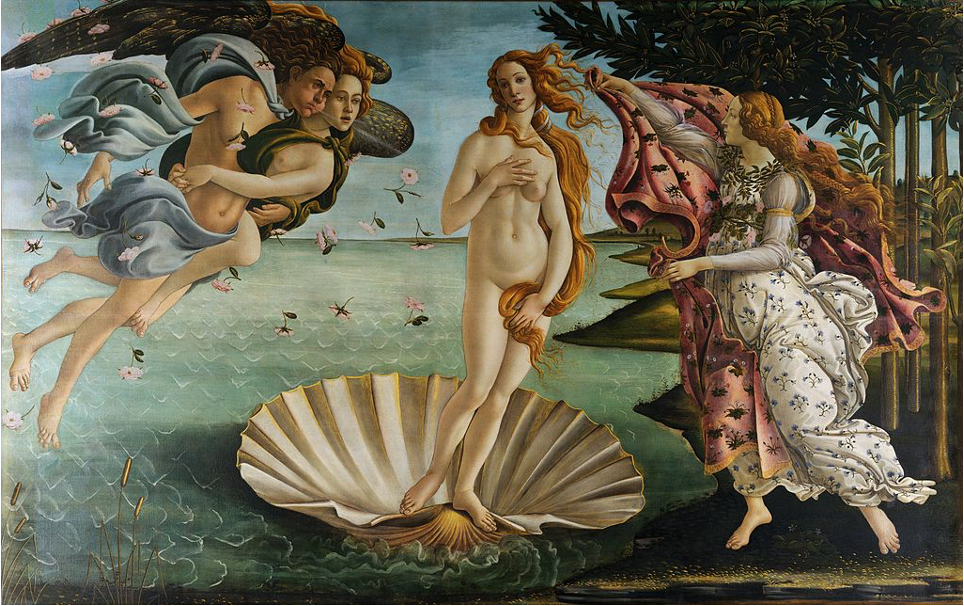
Which piece is this? It is a super iconic piece, and many other art pieces try and reference its pose. It is a secular piece, and the atmospheric perspective is okay.
Sandro Botticelli “The Birth of Venus” Early Renaissance 15th c. Italy
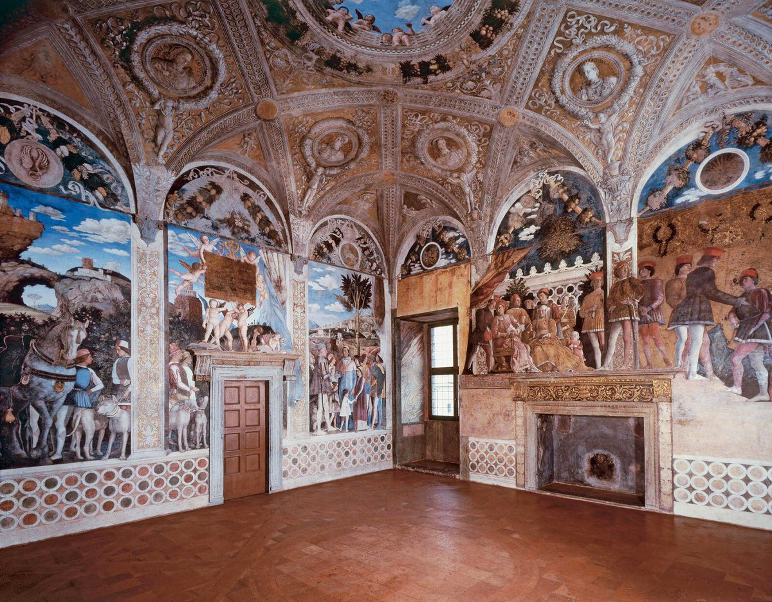
Which piece is this? It uses many Trompe-l’oeils, such as the ceiling and the feet stepping off of the sides
Andrea Mantegna “Camera Picta” Early Renaissance 15th c. Italy
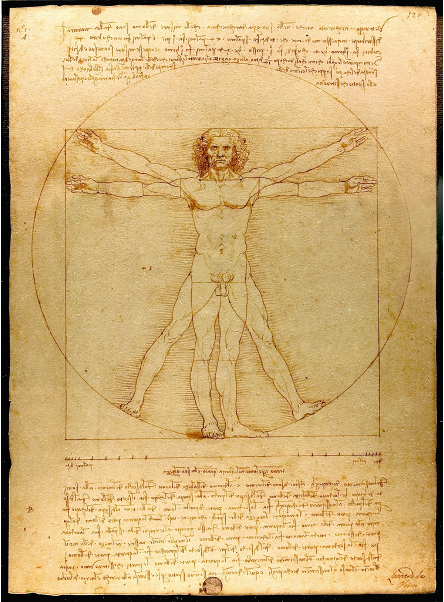
Which piece is this? So before, perfect shapes were only really used in architecture. In this piece, the artist applies this to the human form. Proportions are a main focus
Leonardo da Vinci “Virtuvian Man” The High Renaissance
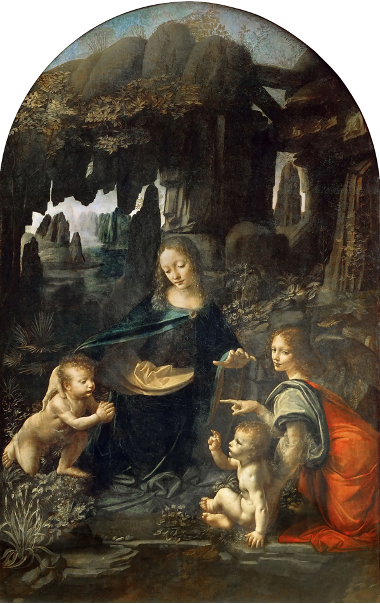
Which piece is this? It utilizes Sfumato, as artists were beginning to focus on perfecting atmosphere. It also uses atmospheric perspective
Leonardo da Vinci “The Virgin of the Rocks” The High Renaissance
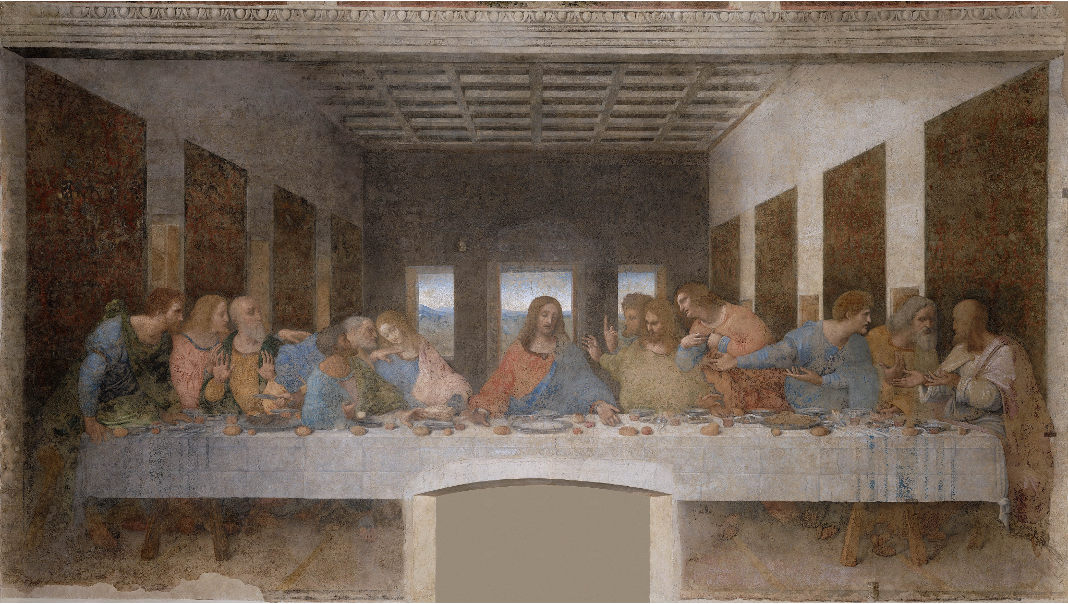
Which piece is this? It is an iconic piece with naturalistic forms and great proportions in its figures and architecture.
Leonardo da Vinci “The Last Supper” The High Renaissance
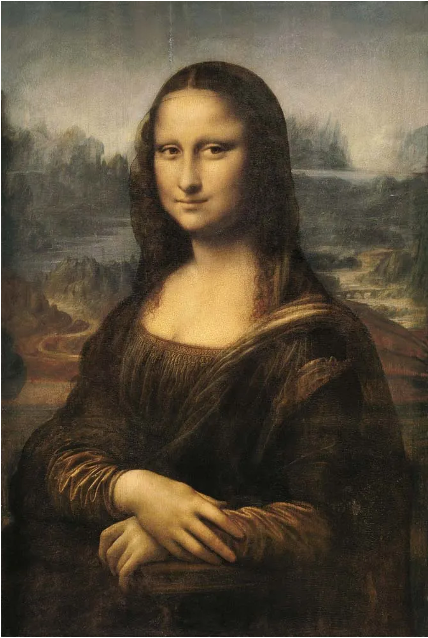
Which piece is this? This SUPER MEGA POPULAR paining It is set outdoors and the figure is in common clothing. Their hands are showing, and they are in a ¾ pose. There is good atmospheric perspective and sfumato. Sadly the French own it now
Leonardo da Vinci “Mona Lisa” The High Renaissance
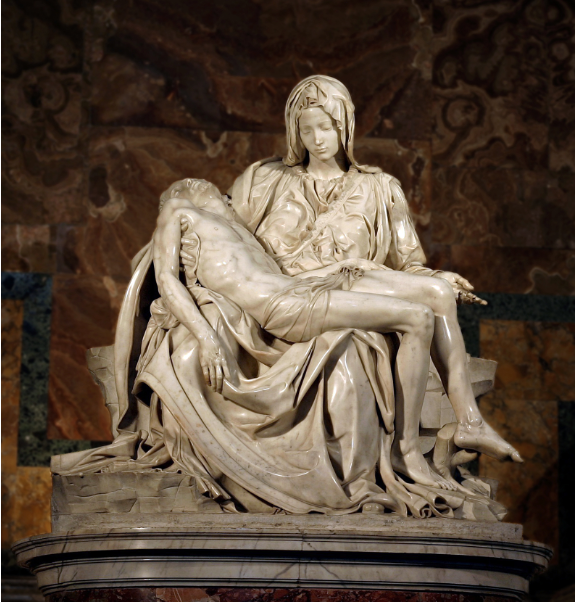
Which piece is this? This was done in the artist’s favorite art medium. Instead of the figure looking super upset, it is more calm, as it is depicted as a final goodbye between mother and son. The figures are very naturalistic
Michelangelo “The Pietà” The High Renaissance
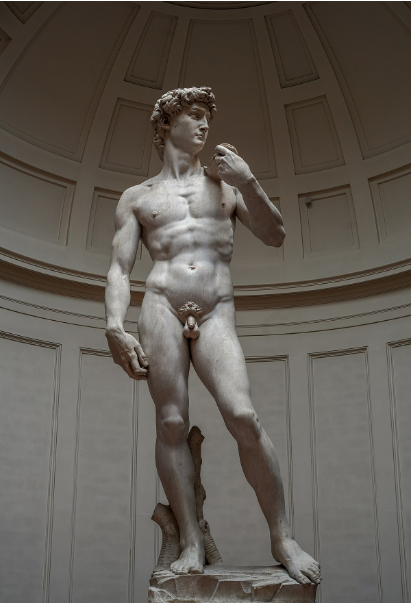
Which piece is this? There is a focus on proportions and naturalism. It is in a contrapposto pose.
Michelangelo “David” The High Renaissance

Which piece is this? It was on the Sistine Chapel and showed the artist’s way of drawing muscles.
Michelangelo “Libyan Sibyl” The High Renaissance

Which piece is this? This iconic piece is on the Sistine Chapel and shows Adam being given the spark of life by God.
Michelangelo “The Creation of Adam” The High Renaissance
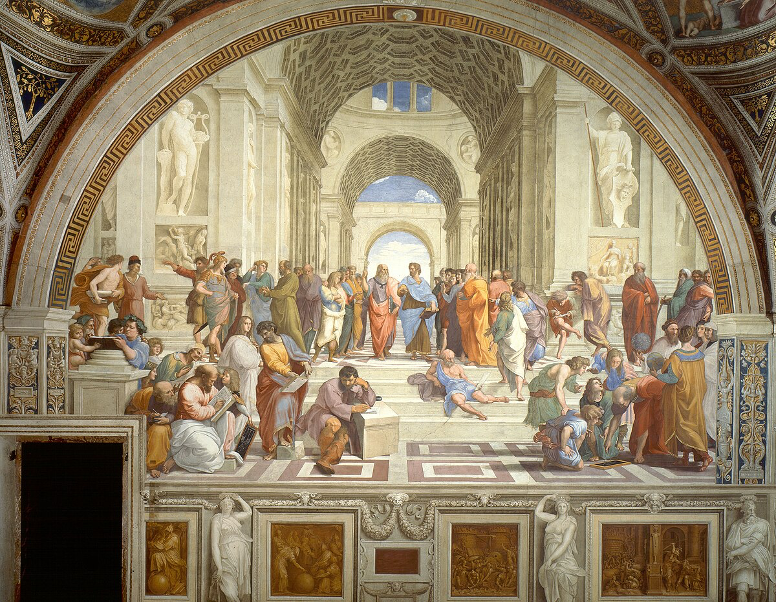
Which piece is this? It is a secular work that looks back on the classical past, focusing on classical architecture and people such as philosophers. There is a depiction of Leonardo. Human forms are naturalistic and there is atmospheric perspective.
Raphael “The School of Athens” The High Renaissance
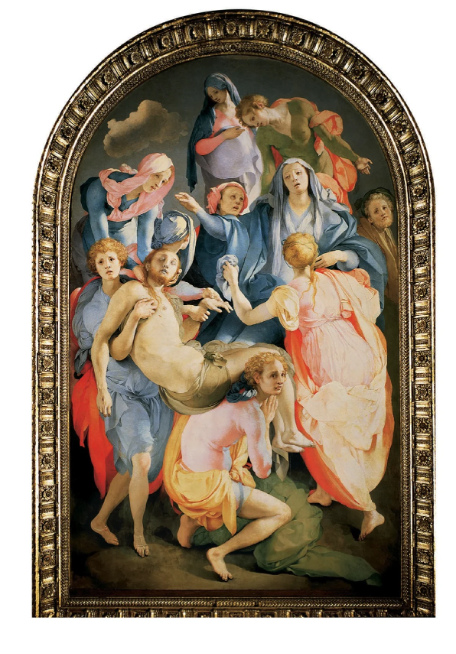
Which piece is this? Proportions aren’t exactly accurate, as the forms figures are elongated. It also has a strong emotional quality to it
Jacopo da Pontormo “Pietà” Late Renaissance & Mannerism 16th. C Italy
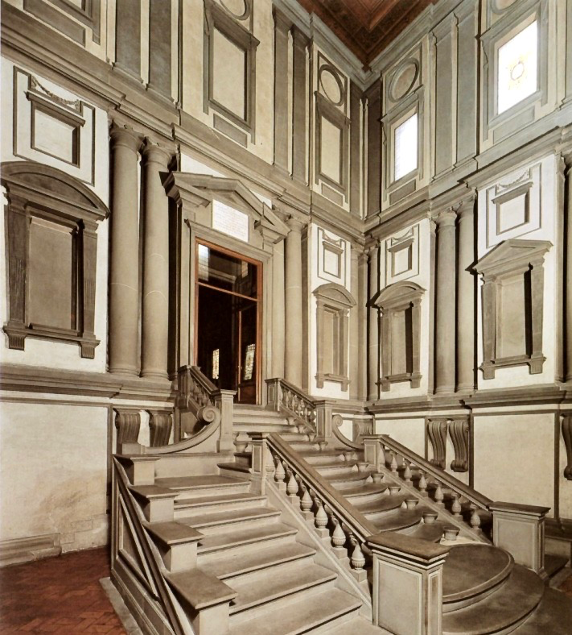
What piece is this? It shows the mannerist style of architecture, like the broken pediments
Michelangelo and Bartolommeo Ammanati “Vestibule of the Laurentian Library“ Mannerism 16th c. Italy
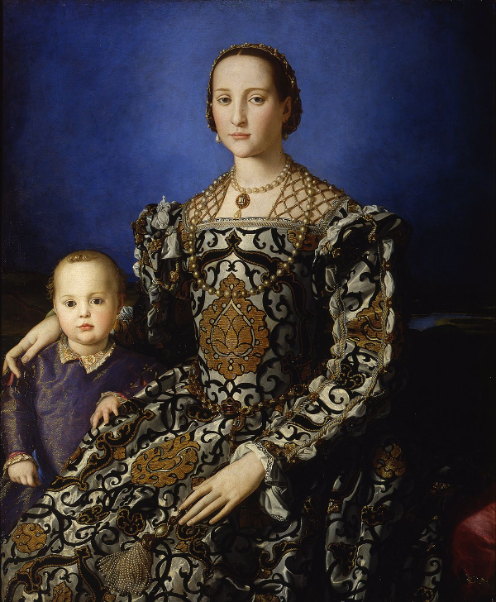
Which piece is this? It shows how portraits are now reverting back to figures in fancy clothing and inside. The figure has long fingers.
Agnolo Bronzino “Portrait of Eleanora of Toledo and Her Son Giovanni de’ Medici” Late Renaissance & Mannerism 16th. C Italy
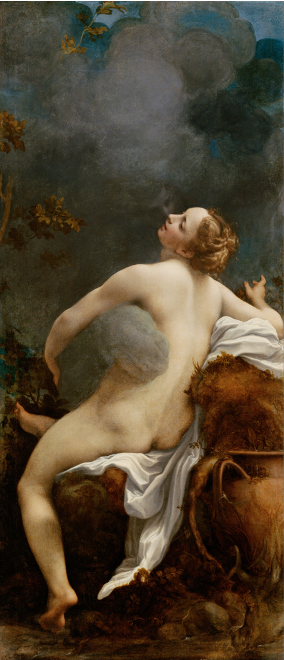
Which piece is this? It is of a mythological shapeshifter, which you can see as a trompe-l’oeil. There’s strong emotive qualities and elongated forms.
Correggio “Jupiter” Late Renaissance & Mannerism 16th. C Italy
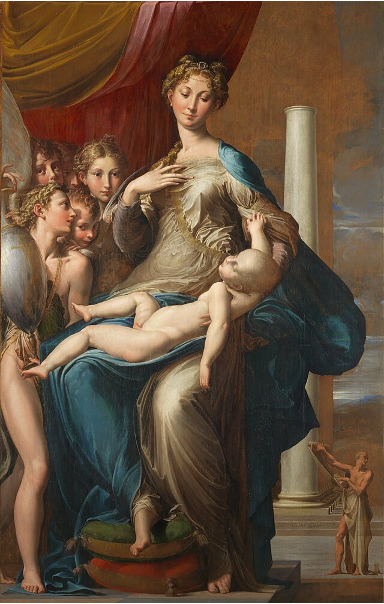
Which piece is this? The figures are elongated, especially one of their neck’s
Parmigianio “The Madonna with the Long Neck” Late Renaissance & Mannerism 16th. C Italy
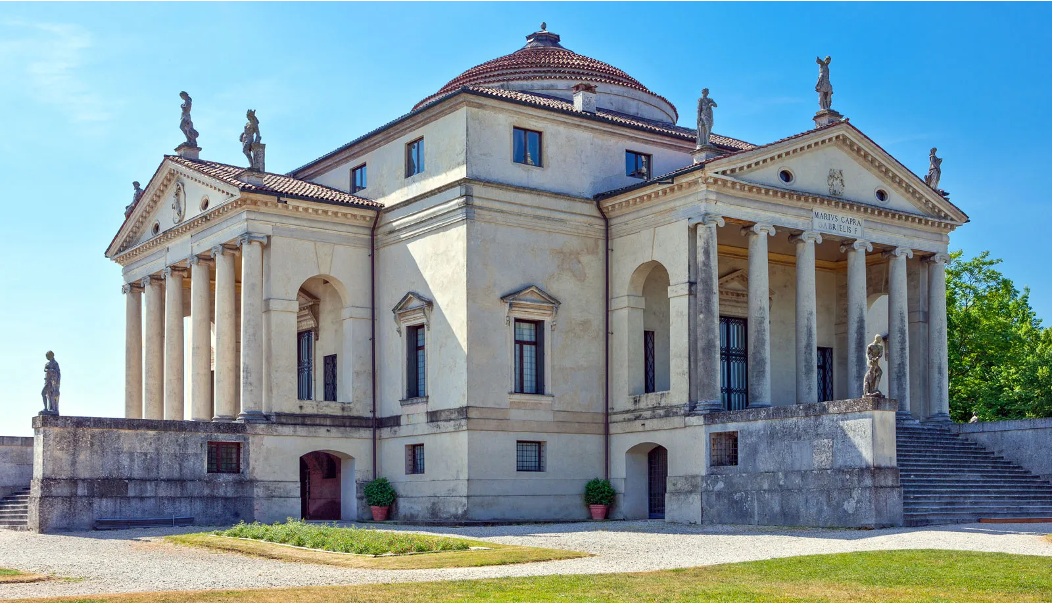
Which piece is this? The designer who made this wanted to revive classical architecture. There are perfect shapes and proportions.
Andrea Palladio “Villa Rotonda” Late Renaissance & Mannerism 16th. C Italy
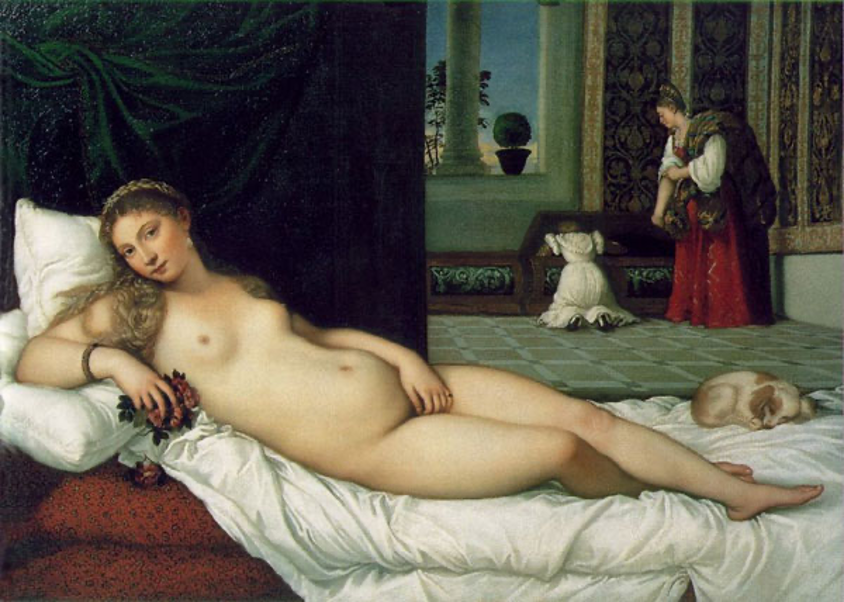
Which piece is this? This piece is inspired by old mythos. There is strong emotive quality, and the figures are elongated.
Titian “Venus of Urbino” Late Renaissance & Mannerism 16th c. Italy
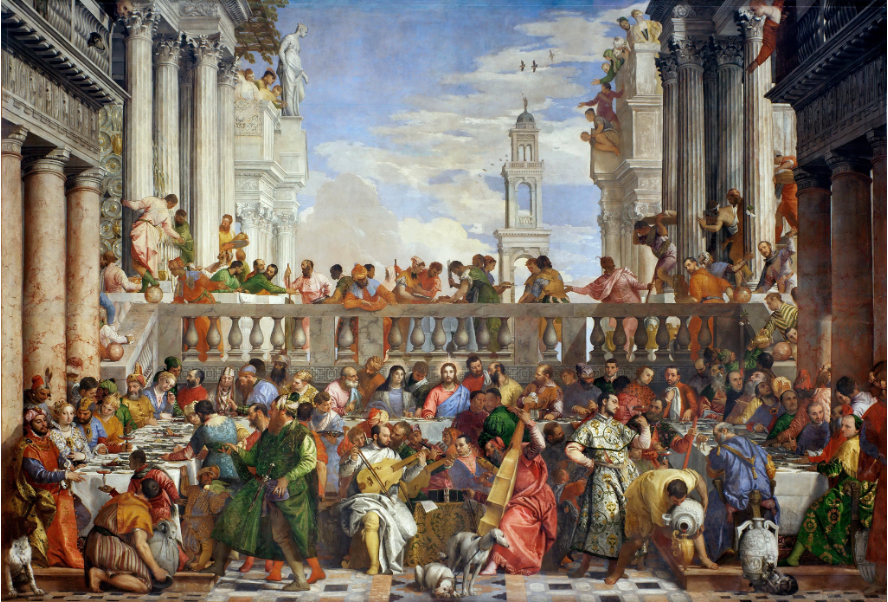
Which piece is this? (no info on this one)
Paolo Veronese “The Wedding at Cana” Late Renaissance & Mannerism 16th. C Italy
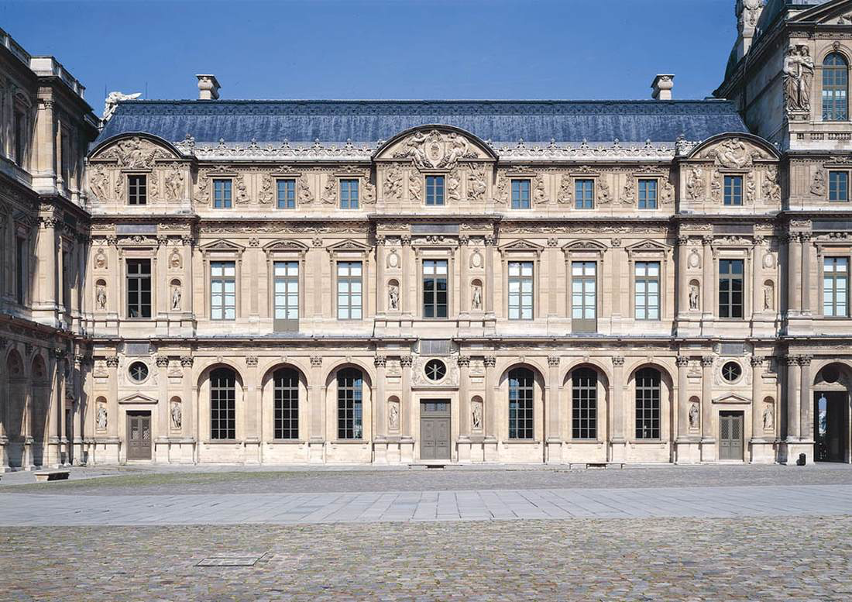
Which piece is this? It is kinda a mannerist work? But also classical elements are used, in addition with other styles. Some French/Gothic art ideas are used, such as verticality.
Pierre Lescot “Square Court” at the Louvre —Renaissance & Reformation in 16th c. Northern Europe
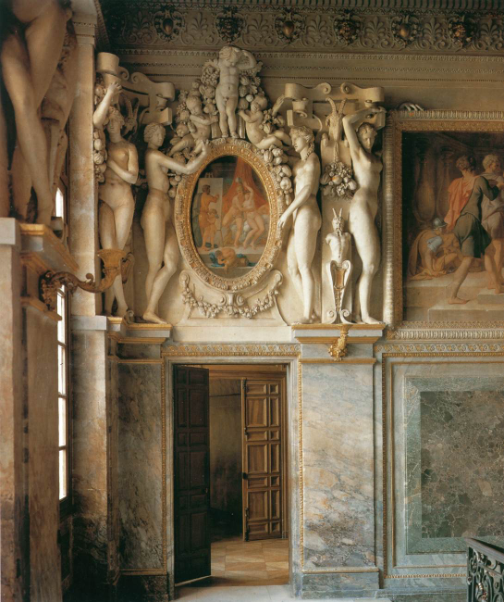
Which piece is this? The figures are elongated
Francesco Primaticcio “Stucco Figures” Renaissance & Reformation in 16th c. Northern Europe
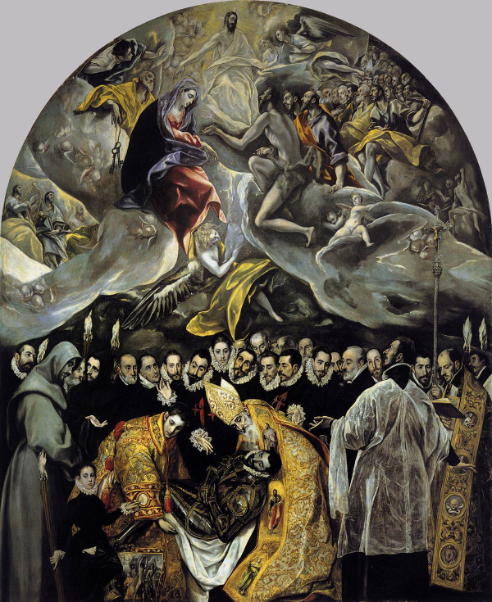
Which piece is this? It is in a triangle composition, and has a nice use of light and space.
El Greco “The Burial of Count Orgaz” Renaissance & Reformation in 16th c. Northern Europe
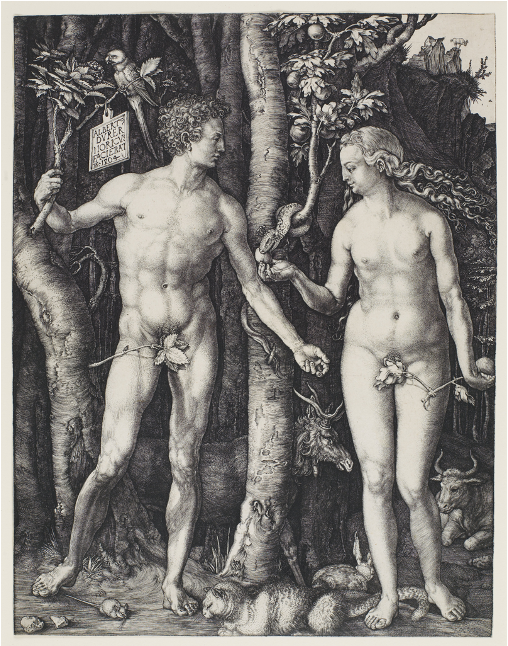
Which piece is this? It is an engraving with good musculature
Albrecht Dürer “Adam and Eve” Renaissance & Reformation in 16th c. Northern Europe
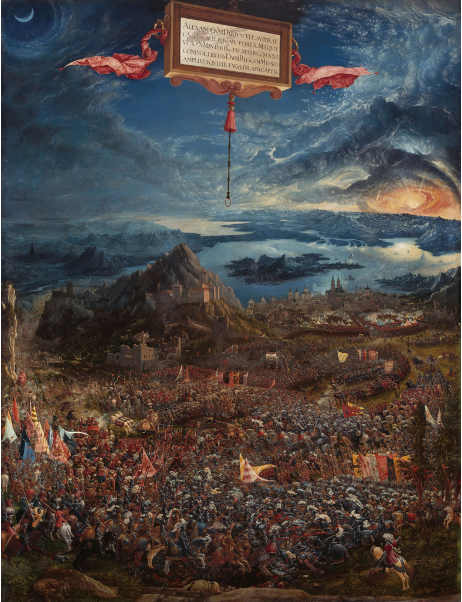
Which piece is this? Contemporary dress is used to relate to common day people. It is super detailed and has a good atmosphere.
Albrecht Altdorfer “The Battle of Issos” Renaissance & Reformation in 16th c. Northern Europe
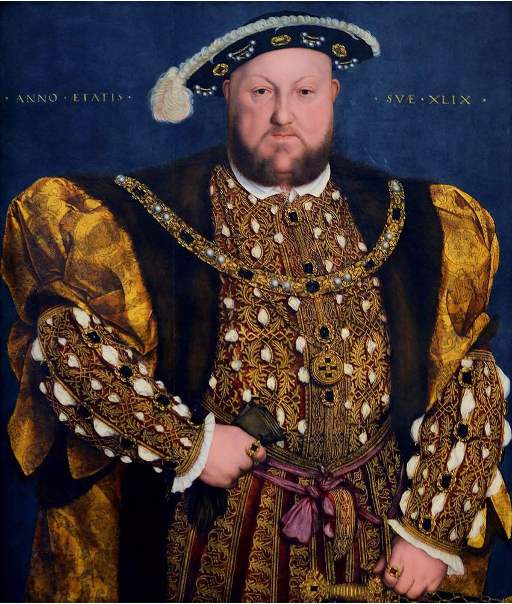
Which piece is this? The rich colors are influenced by the Flemish. It is influenced by iconic imagery, as the figure is front facing.They are also in their best clothes and inside.
Hans Holbein the Younger “Henry VIII” Renaissance & Reformation in 16th c. Northern Europe
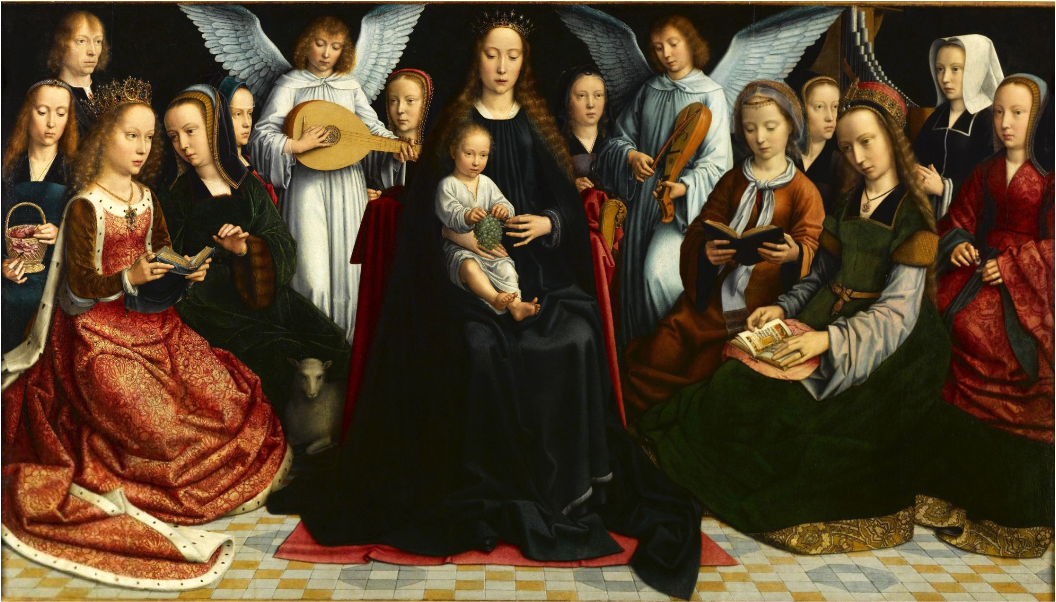
Which piece is this? It uses rich colors, inspired by the Flemish
Gerard David “Virgin Among Virgins” Renaissance & Reformation in 16th c. Northern Europe
What are characteristics of Flemish art that a lot of art takes inspiration from?
Rich colors
What are characteristics of iconic imagery?
Halo behind head, gold leaf, front facing, specific hand position, and depicting a religious figure.

What’s this kinda shape? It is from gothic art and architecture. It’s decorative element of overlapping circles
quatrefoil
What periods were the main inspiration of 13th & 14th c. Italian Art?
Greek and Roman Classical, Byzantine and Early Christian, and Gothic
What are characteristics of gothic art and architecture that a lot of art takes inspiration from?
Lightness, verticality, pointed arches, and groin vaulting
What are characteristics of Byzantine and Early Christian art and architecture that a lot of art takes inspiration from?
Iconic imagery
What are characteristics of Classical (as in Greek and Roman) art that a lot of art takes inspiration from?
Forms in their natural setting, naturalistic human form, contrapposto, their sculptures, and proportions
What are characteristics of Classical (as in Greek and Roman) architecture that a lot of art takes inspiration from?
Columns, arches, proportions, perfect shapes
Triptych
A three paneled work
Diptych
A two paneled work
Polyptych
A multi paneled work
Which period begins at the tail end of Art History one, and has a focus on classical, Byzantine and Early Christian, and Gothic works?
13th & 14th c. Italian
Which era saw a rise in secular art and the invention of the printing press?
15th c. Northern European
What invention made art cheaper, causing middle class people to be the new target marker for artwork. It also caused literacy rates to go up
The printing press
Unrelated to The Church
Secular
What kind of art was made now that more people began to question The Church due to The Pope moving?
Secular
Why was artwork of Biblical events sometimes depicted as being in the current period?
So people could relate to it
What period began to see artists as humanists, and art got really good due to the focus on naturalism, proportions, and the body in motion?
Early Renaissance 15th c. Italy
What period was the peak of art around this time? Now, artist were REALLY seen as humanists, proportions and perfect shapes were REALLY perfected, and portraits were popular?
The High Renaissance
What period focused on portraits? Usually, these portraits were outside, and had the figures in common clothing.
The High Renaissance
Visual illusion in art
Trompe-l’oeil
During the Renaissance, mainly the High Renaissance, what were artist seen as? This differs from them previously being seen as craftsmen.
Humanist
A great thinker or an intellectual, such as a philosopher
Humanist
An art technique to render things in a smokey or humid atmosphere
Sfumato
What period began to see a break from The Catholic Church, with more people beginning to follow Martin Luther. Lutherans also go against making iconic imagery.
Renaissance & Reformation in 16th c. Northern Europe
What period was kind of the “fall” of the Renaissance?
Late Renaissance & Mannerism 16th c. Italy
What kind of works were elongated, created in tandem with literature, so inspired with literary works, emotive, and have a focus on alteration of classical architectural forms?
Mannerism
How was Mannerist architecture different?
Broken pediments, tapering, and altering shapes like the round pediment.
Trained by Italian artists as an icon painter, this artist was Northern European, and made pieces with lots of emotion and realistic faces.
El Greco
This person wrote the widely famous four books of architecture. People used their work as blueprints in Europe and America. They were concerned with proportions, and followed classical rules. They followed mannerist ideas like breaking the mold, but they followed classic rules, such as being concerned with proportions — this made them more aligned with the Late Renaissance than to mannerism!!
Palladio
Which artist made David, a Pietá, and painted the Sistine Chapel. He was a sculptor, architect, painter, and poet. He felt that culture was the premiere form of artwork. He was seen as a humanist,
Michelangelo
Who was versed in many topics - math, science, art, painting
Leonardo de Vinci
What period really shifted away from the Catholic Church, had the spread of Martin Luther’s ideas, more trade, wood cuts, El Greco, and some focus on the gothic style?
Renaissance & Reformation in 16th c. Northern Europe